|
The nomadic residents of Kodaikanal are known as Paliyans, the residents of the Palni Hills. They have the age old hunter gatherer life that their ancestors followed thousands of years ago. Its enthralling watching them relax for a noon meal during their regular activities.
2 Comments
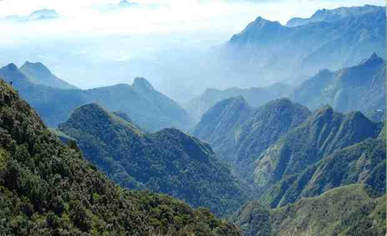 Kodaikanal is a beautiful hill station located on top of the Palani Hills at an altitude of 2100 meters or 7000 feet. Kodaikanal was developed by Christian missionaries in the 19th century. Today it’s a tourist favourite. Some tourists go to Kodaikanal for a day with a prescribed list of sightseeing places and visit each site and take photographs put it on their facebook and instagrams and speed down the mountain before the day is done. Others stay many days and explore the small lanes that surround the slopes around the pristine lake and enjoy the old rustic buildings that remain. Then there are tourists that don’t spend much time in the Kodaikanal town and focus primarily on the mountains with the lush grasslands and clusters of green rainforests known as sholas. In Tamil the word Solai means forest. So if you are a quick fire tourist on a day’s visit or the more investigative person, or the educated aware traveler, the attraction of Kodaikanal, the contrasting cool temperature that is a welcome change from the searing heat of the plains, the lovely drive up the mountain on a curvy road between dense forests, and the pale mist that soars from the still lake on a chilly morning – continues to be as alluring as its been since the dawn of its inception in June 1845. 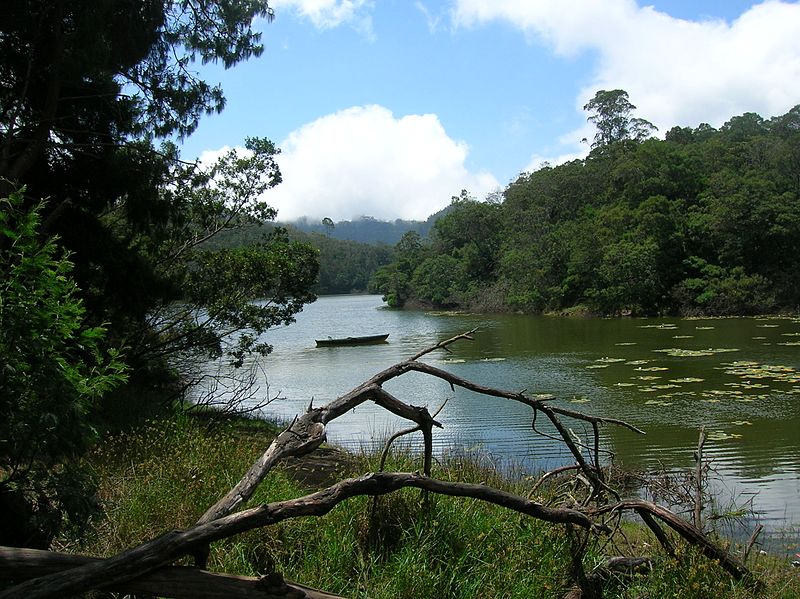 Berijam Lake Berijam Lake The Berijam lake in Kodaikanal is located deep in the Kodaikanal forest about 23 km interior Kodaikanal. Berijam Lake is a reservoir near Kodaikanal town in Dindigul district of Tamil Nadu, South India. It is at the old site of "Fort Hamilton", in the upper Palani hills. The lake was created by a dam with sluice outlets and is part of a micro–watershed development project. Periyakulam town, 18.7 kilometres (11.6 mi) to the SE, gets its public drinking water from the lake. The lake’s water quality is excellent and its quite a beautiful site to visit. Berijam is located at the end of Pillar Rocks Road in Kodaikanal (old SR-18), 21 km (13.0 mi) southwest of Kodaikanal Lake. map There were two roads from Berijam, the Kodaikanal–Munnar Road to Munnar town, about 40 km (24.9 mi) west and another going to Kavunji village, 9 km (5.6 mi) north. The old roads are now overgrown with vegetation and used as walking trails by local villagers and trekkers. The Tamil Nadu Forest Department in Kodaikanal has restricted entry into the Berijam Lake area to between 9.30 a.m. and 3 p.m. for the general public. Entry permits are issued at the Forestry Department Office in Kodaikanal. Only a limited number of visitors are allowed in the park each day.There is a forest check–post which prohibits unauthorized entry through the road leading to Berijam Lake. Beyond km marker 13 on the Berijam road there is an observation tower from where one may have a fine view of Berijam Lake and the surrounding forest. It was previously accessible to everyone and many schools in Kodaikanal and groups did their camping there and fished there. But now it is still accessible but with limited number of tourists each day. Tourists can get special permission to visit the lake by going to the forest office in the morning and getting a day pass for their car and vehicle registration number. Then they can go for the day and enjoy the beautiful drive from Kodaikanal to Berijam. Once you are at the lake you can enjoy the serene time and nature. If you are lucky you may spot some wildlife such as the Indian gaur or bison as it is known or other animals like sambhar, barking deer etc. Berijam has a Forest Department Camp including an Eco-Education Center for visitors. Nature areas to be visited here include: swamp ecosystem, fresh water ecosystem, nature trail, bridge, medicinal demonstration garden, museum, nature walk, grassland and shola in Kodaikanal. History There was originally a swamp here known as the Berijam swamp in Kodaikanal. The previous existence here of a large lake, evidence of which was visible nearby, was first recorded in 1864 by Colonel Douglas Hamilton of the 21st Regiment of the Madras Native Infantry. No written record or even local legend regarding the existence of this ancient lake survives. However, judging from visible traces of its shoreline which still remained in 1906, it must have been nearly 5 mi (8.0 km) long, up to 3,960 ft (1,210 m) wide and up to 70 ft (21 m) deep. It was apparently formed by the side of a hill slipping down into a valley which slopes northwards, and damming up the stream which ran to the Amaravati River at the bottom of it. This stream apparently eventually cut its way through the huge natural embankment so formed, and thus emptied the lake this landslide/dam had once created. The dam was about 600 ft (180 m) long and the breach in it was about 300 ft (91 m) across and 90 ft (27 m) deep. In 1864, Colonel Hamilton in Kodaikanal submitted a report stating that the Berijam Lake area was the best site in the Palani Hills for a military cantonment or Sanatorium. A military outpost later built here, Fort Hamilton, was named for him. There was in fact no 'fort' at the place, only a small hut. Berijam lake was artificially created in 1867, in Kodaikanal when Sir Vere Levigne, Collector of Madurai, donated part of his personal retirement funds for building the dam. Subsequently, the dam and reservoir were enlarged and a pipeline was built to supply drinking water to the Periyakulam Municipality. The scheme was completed in 1912 at a cost equivalent to US $138,500. Berijam in Kodaikanal has a 100-year-old 2-story brick building, partly damaged and blackened over the years, with a bright yellow painted name reading "Britisher's Transit Camp". This is one of several transit camps built every 15 km (9 mi) for the soldiers to rest along the 230 km (143 mi) British "Escape Route" from Kodaikanal via Top Station and Munnar to Kochi, built during World War II. While most of the transit camps are now either dilapidated or demolished, the one at Berijam still stands. Berijam Lake in Kodaikanal has been studied palynologically revealing a 20,000 years story in Kodaikanal by pollen particles deposited in lake sediments. The time span between 20,000-17,000 years before present (B.P.) experienced cold and dry climatic conditions. After this period arid oxidizing environmental conditions prevailed for a period of 2500 years. The time span between 14,500–7;000 years B.P. witnessed a climatic amelioration phase leading to a warm and humid climate. From about 7,000 years B.P. to present the area has had a cool and humid climate. Hydrology The Upper Palani Hills catchment basin drains into the Lake. Rainfall is the chief source of water into the lake. Average annual rainfall in the hill area is 1,500 mm (4.9 ft). The mean day temperature in the coolest months is below 17 °C (62.6 °F) in the higher areas. The lake is formed below the Palani hill ranges at the origin of the Varahanadhi (Varaha River) which is used for purposes of water supply and irrigation. As a part of the World Bank funded Water Resources Consolidation Project (WRCP) of Tamil Nadu, in Kodaikanal, sedimentation condition was assessed for a large number of reservoirs including Berijam reservoir. This indicated that the 1.91 cubic hectometres (1,550 acre⋅ft) gross storage capacity of the reservoir in 1911 decreased to 1.804 cubic hectometres (1,463 acre⋅ft) in 1987. The percentage reduction of storage due to siltation is 23%, over a period of 76 years. Berijam Lake had stable land conditions, thus erosion was less and the lake received less sediment but more organic matter in the proportion of (5.5–41.8%). The rate of sedimentation is indirectly proportional to the influx of organic matter. Water quality On the basis of chemical parameters and nutrient load studies, the Berijam lake in Kodaikanal has been categorized as oligotrophic with a tendency to eutrophication over time due to plankton growth in the lake. This conclusion is supported by oxygen deficits in the bottom due to the chemocline condition of the lake. Flora Berijam is rich in flora and fauna (some are pictured in the gallery) and has a few original eco–initiatives to its credit, namely, South India's first field–oriented eco-education centre set up by the Forest Department, an exclusive medicinal plants demonstration garden spread over 1.0 ha (2.5 acres) and a model swamp observation area created to educate the public. A rare species of free floating insectivorous bladderwort plant called utricularia australis is said to be found here in Berijam at Kodaikanal. The catchment of the Berijam Lake in the Palani hills in Kodaikanal falls under the once extensive shola grassland ecosystem, also called the "cloud forest". These grasslands constitute a complex and highly diverse plant community which in turn supports a wide range of fauna from insects to large mammals. With the sholas they constitute one of the world’s rarest, most biodiverse and spectacular of landscapes. Where the grassland has been destroyed by industrial timber plantations, streams and marshes have dried out. Data on germination and cultivation of c. 250 shola species and long term biographies of c. 70 shola tree species in the area have been published. Medicinal flora Development and cultivation of medicinal plants like Digitalis, Pyrethrum, belladona, Dioscorea sp. and Mentha is an active programme launched by the Tamil Nadu Agricultural University through the 40 hectares (99 acres) research centre of the Central Institute of Medicinal and Aromatic Plants (CIMAP) near Berijam.[19] Commercial marketing of high yielding varieties of these plants is now being actively pursued. [20] Psilocybin mushrooms which produce hallucinogenic effects when consumed, and other species of mushrooms grow around Berijam at Kodaikanal. Fauna The Upper Palni Shola forest reserve surrounding Berijam lake in Kodaikanal has a rich faunal population comprising the following. Avifauna Resident birds include crested serpent eagles, pariah kites, pale-rumped swallows and the edible-nest swiftlets. Migratory birds wintering here in Kodaikanal include the common rosefinch, the blue chat, several leaf-warblers and Blyth's reed-warbler. Mammals Threatened mammals in Kodaikanal include bison, Nilgiri langur, Malabar giant squirrels and Indian elephants are seen here as well as Indian crested porcupines, wild boar, barking deer, sambar deer and mouse deer. In February 2010, tigers were sighted in Kodaikanal forests during a six-day carnivore survey. A tigress and her cub were spotted playing in the wild. Forest Department officials are studying survey data to estimate the local tiger population based on indirect evidence like pug marks, scats and scratches. Of the two wildlife corridors proposed for movement of Indian elephants in the Palani Hills Reserve Forest, the Berijam corridor in Kodaikanal connects to Top Station in Kerala. It is also being studied if a link corridor through the Kukkal area, could be established to the second corridor from Indira Gandhi Wildlife Sanctuary and National Park through Amaravathy and Kudhiraiyar to the Palar Dam, then up the valley almost to Ganesh Nagar, below Pethuparai village. Fish In 1886 there were carp in the lake. In 1914 there was a scheme to introduce trout into Berijam reservoir in Kodaikanal . But it may not be a good idea because trout is a fish that will easily allow other fish to survive or co exit. Conservation Threats The catchment basin of the lake, historically dominated by extensive shola grass lands, drains into marshes at the head of the lake. However, most of the catchment area was afforested, during the 1960s, with eucalyptus, wattle and pine. The main Berijam marsh in Kodaikanal has shrunk, as evidenced in March 2007, by walking across the marsh without getting one’s feet wet. This is attributed to less water discharging into the lake. Shrinking of the lake has also been noticed with the boating dock getting shifted to deeper waters on the opposite side of the creek. The creek waters adjoining the marsh have been gradually invaded by marshland vegetation of water lilies, torpedo grass and native sedges with shoots in water and roots at the nodes. The water lilies were planted there "reportedly" for ornamental purposes by the Forest Department in Kodaikanal. These marshland invasives are accelerating the siltation process and may eventually result in necessity of raising the height of the dam to compensate for loss of storage due to siltation. A crisis in the water regime of the Palani plateau in Kodaikanal has been observed at Berijam Lake. The lake’s marshlands have been reported to dry out after the monsoon and marsh vegetation is seen encroaching into the deeper part of the lake. Near threatened grey-breasted laughingthrush Studies by the Sálim Ali Centre for Ornithology and Natural History, Coimbatore, undertaken in 2006 in many areas of the Palani hills in Kodaikanal including Berijam, indicate that the population of the grey-breasted laughingthrush, a near threatened endemic bird species of the Western Ghats, has been affected by the degradation of its habitat. Remedial measures have been suggested. Otter poaching in the Palani hills in Kodaikanal to the point of extermination has been reported. Common and small-clawed otters are trapped by tribals from the Haryana state of India, who are in Palani hills with the sole aim of collecting otter oil which is in demand in northern India. In 1902, important bauxite deposits were discovered in the hills north and south of Berijam Lake in Kodaikanal which The Geological Survey of India investigated during 1964–65. Remedial measures The following measures have been suggested or are under implementation by various agencies. Plastics, smoking and consuming alcohol are prohibited at the lake area. Promote Shola grass land afforestation in the catchment area of the lake, particularly towards Mannavanur where its absence is noticed. This remedial measure could be ecologically and biologically beneficial to restore the lake’s water source in Kodaikanal Grassland rehabilitation could be achieved, with NGO and community participation in Kodaikanal. The Vatakanal Conservation Trust, a non-governmental organization in association with the Tamil Nadu Forest Department has initiated efforts to restore the shola system. A pilot project was undertaken to protect the Pambar shola, adjacent to Kodaikanal. Kurinji saplings associated with Shola grasslands and other native grasslands species have been successfully nurtured. Excellent flowering of kurunji flowers on the cliffs near Berijam Lake in Kodaikanal have been noted during August and September.Noting the effect on the breeding of the grey–breasted laughingthrush, the Sálim Ali Centre for Ornithology and Natural History has recommended: 1. Expansion of plantations and restoration of grasslands and shola forests in the Palani hills should be halted. 2. The larger shola forests of Kukkal and Mathikettan (Berijam) to be declared as bird sanctuaries with better protection for the proposed Palani Hills Wildlife Sanctuary and National Park. 3. Set up a GIS database with thematic details, including information on flora and fauna, to help monitor the globally near threatened species. 4. Initiate a nature education programme to highlight importance of natural vegetation in Habitat conservation of biodiversity and watershed management of Palani Hills. After a long day visiting Kodaikanal Berijam Lake, you can head to Kodaikanal and enjoy a wholesome delicious organic food and desert at Nia's Treats Cafe in PT road the best restaurant in Kodaikanal. If you want to go for the best tour in Kodaikanal then Eco Fun would be the best tour in Kodaikanal. www.ecofun.in Hotels that arrange a tour to Berijam lake are found here. www.fairwayinn.co www.ecoescape.co and www.eco-homes.in
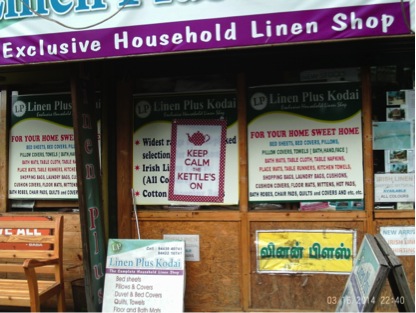 The most striking thing to me about Kodaikanal is how much it reminds me of England. Throw a stone, and you’ll hit an old stone cottage, with moss growing in the crannies and along the ground. An Englishwoman who saw the need for an English-medium school to assist the numerous Christian missionaries in the area founded the Kodaikanal International School in the early 1900s. It’s somewhat imposing gray stone façade—located in the middle of town—shows the founders roots quite clearly. The English (and Christian) influence can be felt in the Christ the King church, located not from the KIS. I swear, someone went to a little village in England, plucked this gem out of the grass and transported it to Kodai. While I didn’t go inside, I did get a glimpse of the interior, complete with leaded glass windows and a turret. Kodaikanal also has it’s own tea room, again located in yet another sweet stone building from the turn of the century. While the food at Tredis Tea House may leave some wanting, the atmosphere alone is worth a visit.
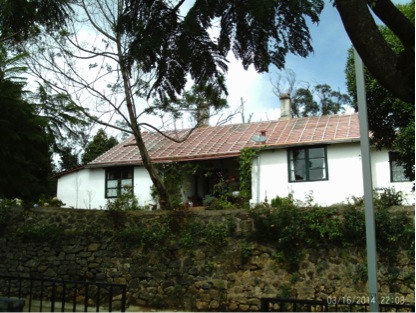 With the feel of the English countryside butting up against the color, vibrancy and power of South India, this is a town like no other. The relaxed atmosphere and cozy feel of the town makes it ideal for lovers. There are a plenty of sweet guest-houses to choose from. Those who want to be closer to the action can choose a place near the center of town, while couples wanting more solitude will find a number of options for places to stay nestled in the valley, or farther up on the hillsides. The best hotel in kodaikanal is Fairway Inn and it is special cottages with jazuzzis and kitchens. For an eco holiday and best resort in kodaikanal I thought Eco Escape was beautiful. The vibe of Kodaikanal town is mellow, mellow, mellow, especially when compared to many other places in which you’ll spend time in India. The merchants are, by and large, soft spoken and sweet-tempered. I haven’t once felt pressured to buy something I didn’t already want. There are no tuk-tuks, but there are plenty of taxis around ready and willing to give you a lift home, or to any of the numerous sight-seeing spots nearby. And while the drivers may offer to take you places when you’d really rather stay put, a simple no, or even a shake of the head, will mean you’re left to your own devices. Which means more time to focus on the town, and the excellent company you may be sharing it with. The vibe of the town is mellow, mellow, mellow, especially when compared to many other places in which you’ll spend time in India. The merchants are, by and large, soft spoken and sweet-tempered. I haven’t once felt pressured to buy something I didn’t already want. There are no tuk-tuks, but there are plenty of taxis around ready and willing to give you a lift home, or to any of the numerous sight-seeing spots nearby. And while the drivers may offer to take you places when you’d really rather stay put, a simple no, or even a shake of the head, will mean you’re left to your own devices. Which means more time to focus on the town, and the excellent company you may be sharing it with. I visited Kodai in November, which meant afternoon rainstorms like clockwork, and some of the most beautiful, cozy, mist-covered mornings. When I set out a little before ten there was a perfect chill to the air, the kind that begs for a hot mug of chai. A couple hours later the sun had burned off much of the overhead cloud cover, giving me some delicious warmth as I trekked about. Then, around two, gentle rains cooled down the day once more. I can imagine sitting in a café or on a balcony somewhere, reading or having deep conversations, a mug of tea at hand. If I had to build a holiday home in Kodaikanal it would be amazing as I could enjoy this, I saw a lot of nice homes and was particularly impressed by the eco homes made by Organic Brooklyn builders the best builders in Kodaikanal. They even have a homestay called Avondale which is probably the best homestay and best cottage in Kodaikanal. Whatever time of year you choose to visit, Kodaikanal seems to me a perfect place to bring your honey for a romantic getaway. Beautiful scenery, kind people and shop after shop of handmade chocolates will guarantee to inspire your romantic side. Kodaikanal is a great place to spend time. The city itself is beautiful but if you're tired of spending time in there you can still go 50 kilometers from there where you will find the most friendly and beautiful place.
I stayed two weeks in an organic farm in Kodaikanal thanks to workaway. I spent the first week with an australian girl who was a volunteer too and the second one with another french guy. We would all agree that we had an incredible time. Once we arrived, we were warmly welcomed by the farmers who had prepared a meal for us. They showed our rooms, bathrooms and other important places for our stay. Then we started working the day after we arrived : 5 hours a day of weeding, eventually planting and harvesting. We usually finished quite early in the afternoon and had time, everyday, to do something new. Thus, when we had finished to eat the beautiful food they had prepared for us, we randomly chose somewhere to go and at each time, it was a success. While going to a small village called Poondi, we got lost, and arrived in another village. Then some children started to look at us, tried to communicate with us, and little by little we happened to be surrounded by all the children of the villages who wanted to take a picture with our camera, holding our hands and urging us to follow them in the village. Some days after we went to Poondi, and took this time the write way. The landscapes were absolutely gorgeous. However it took us time to go there, about one hour and a half and after spending a little time there, eating cakes and souvenirs, we came back to Kilavarai during the sunset. What a view. There was still mist and the sky was orange. But we feel great not mainly because of the activities we might do, but mostly because of the quality of the relationships we have. Even if we had trouble communicating in english with them, we could understand each other. Everything was simple : we were satisfied with very little things, people were authentic, warmly. That was a treat and I felt simply happy. |



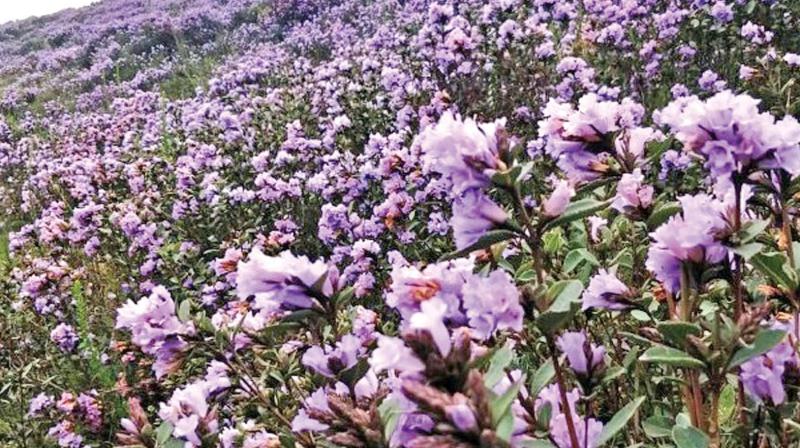
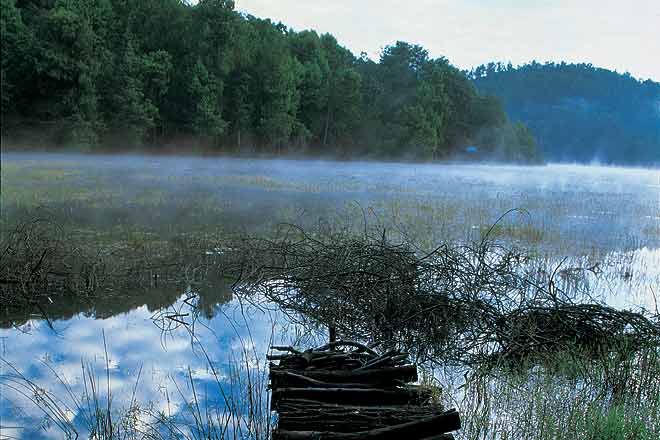
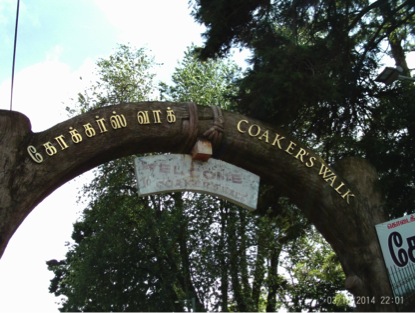
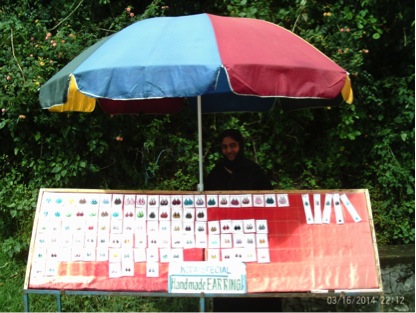
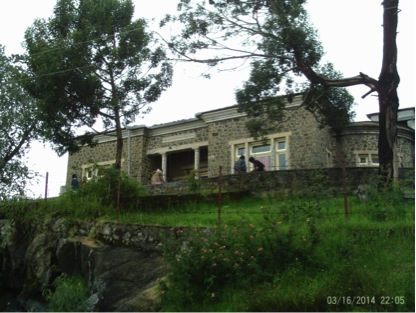
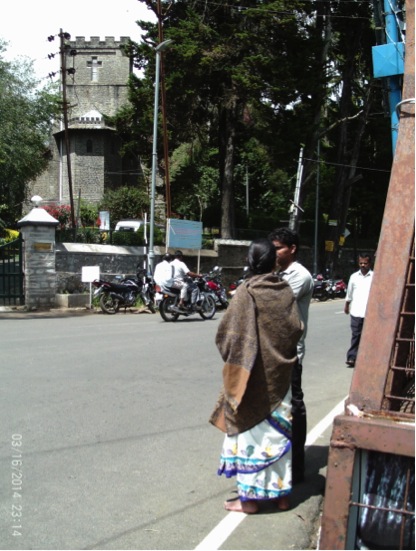
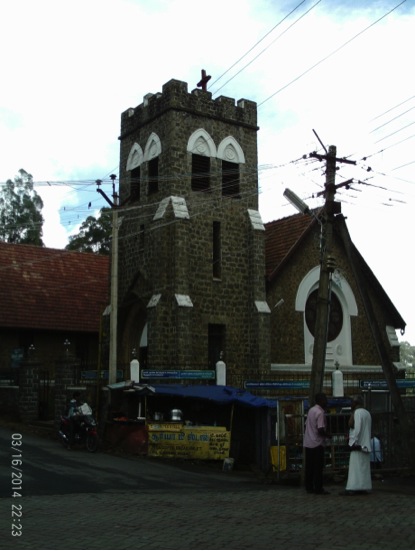
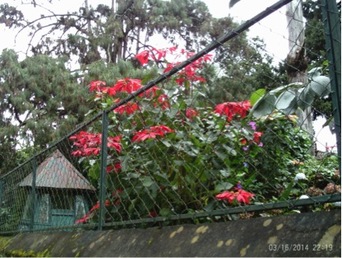
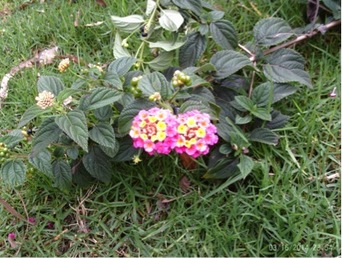
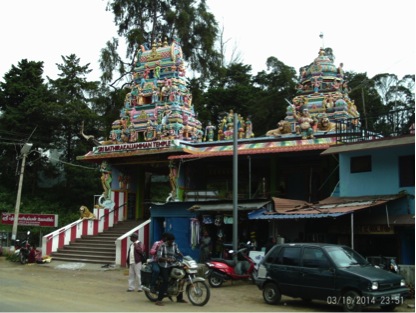
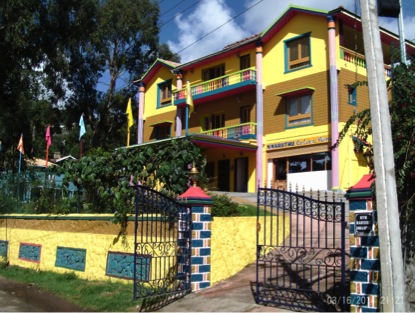
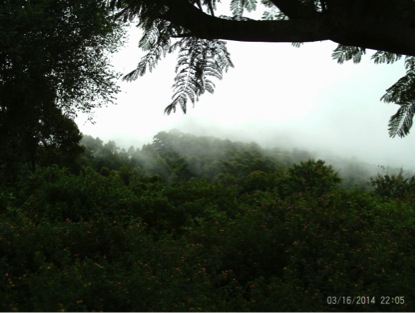
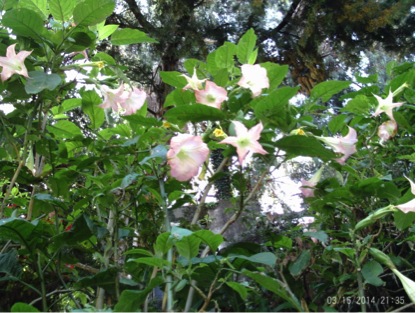
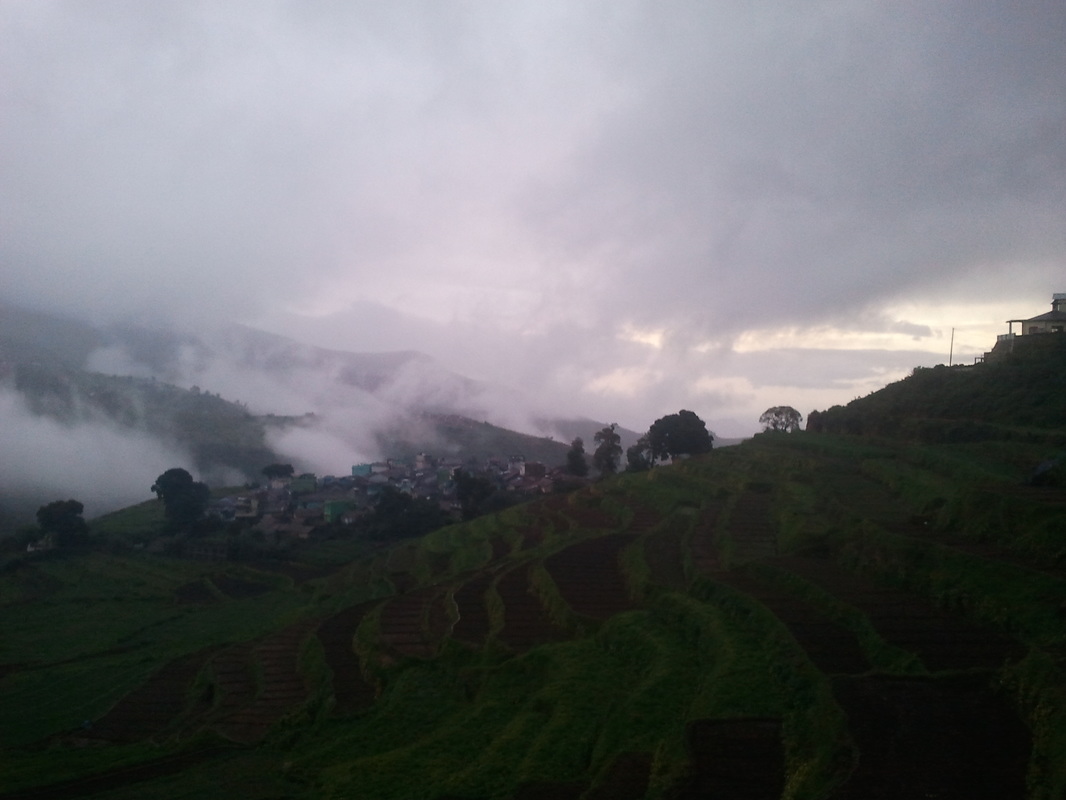
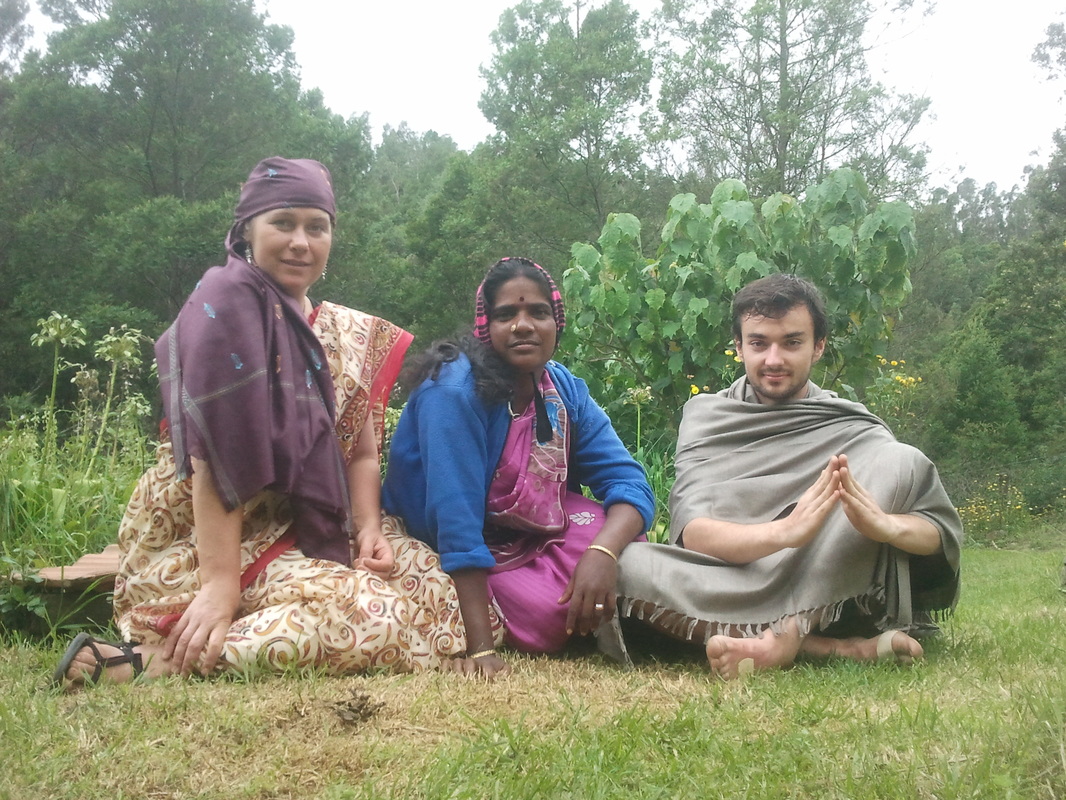
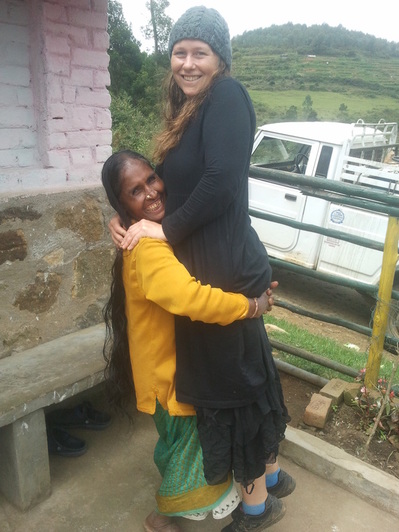
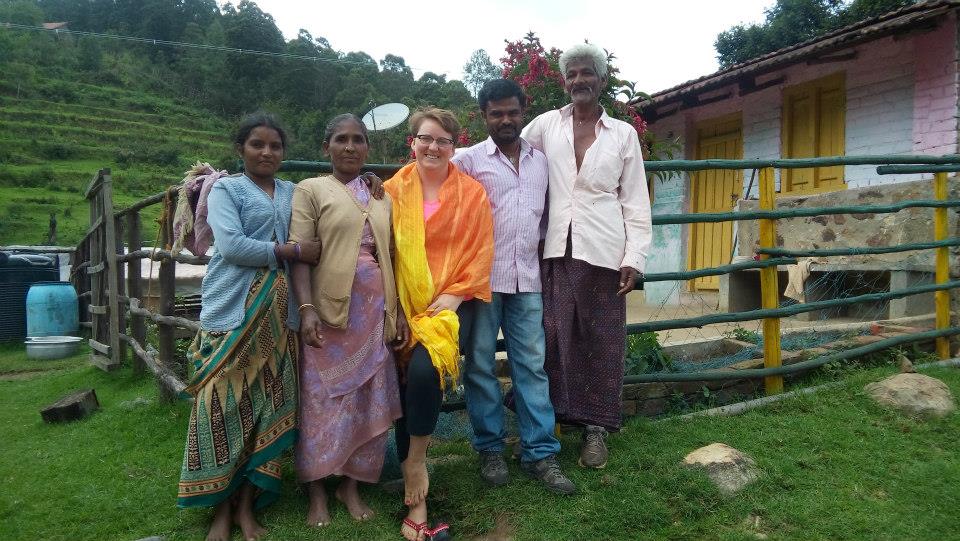
 RSS Feed
RSS Feed
